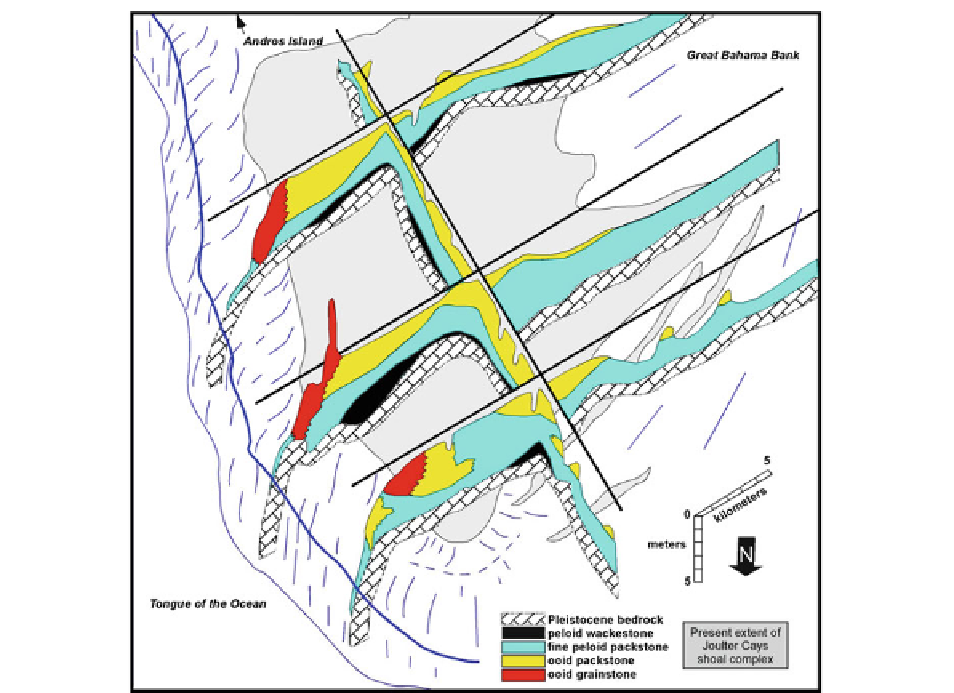Geology Reference
In-Depth Information
Fig. 20.17
Fence diagram of facies patterns, Joulter Cays ooid
shoal complex, Great Bahama Bank, modifi ed from Harris
(
1979
). Note that ooid sand is dominant only on the eastern,
windward fringes of the shoal complex. North is toward the
bot-
tom
of the diagram. See text for discussion
ancient ooid shoal complexes. The best documented
ancient analogs occur in Carboniferous strata (e.g., see
summary in Keith and Zuppann
1993
) . In one Lower
Carboniferous example from West Virginia, in a series
of oolitic shoals, “…each shoal consists of a central
cross-bedded oolite-grainstone facies surrounded by a
transitional grainstone/packstone facies. Burrowed
packstone occupies the adjacent tidal channels…”
(Cavallo and Smosna
1997
) (Fig.
20.19a
). These facies,
directly analogous to Holocene examples, are closely
correlated with changes in reservoir quality in these
systems. In another study, Carr (
1973
) documented
facies patterns in Lower Carboniferous ooid shoals of
the Illinois Basin. There, elongate ooid shoal bars,
interpreted to represent fl ow-parallel tidal bars, include
porosity zones up to 4 m thick which are directly cor-
related to the occurrence of clean oolitic grainstone
(Fig.
20.19b
).
A study of outcrop and shallow cores in an Upper
Carboniferous (Pennsylvanian, Missourian) shoal
complex in the Bethany Falls and Mound Valley lime-
stones in southeast Kansas (Fig.
20.20
) (French and
Watney
1993
) illustrates several important concepts.
In a broad embayment in the area, underlying these
oolitic units, a shaly interval in the Pleasanton
Formation thins to the southeast, creating a prominent
break in depositional slope. In this embayment, on top
of this break in slope, tidal currents were focused, and
a series of at least fi ve elongated, longitudinal tidal
sand ridges between 1.6 and 4.8 km wide and at least
16 km long were deposited. In this succession, the
Bethany Falls Limestone Member (Swope Formation)
includes a lower skeletal wackestone with echino-
derms, brachopoids, bryozoans, and phylloid algae,
capped by a cryptic, but regionally extensive, subaerial
exposure surface. This lower unit is overlain by a

